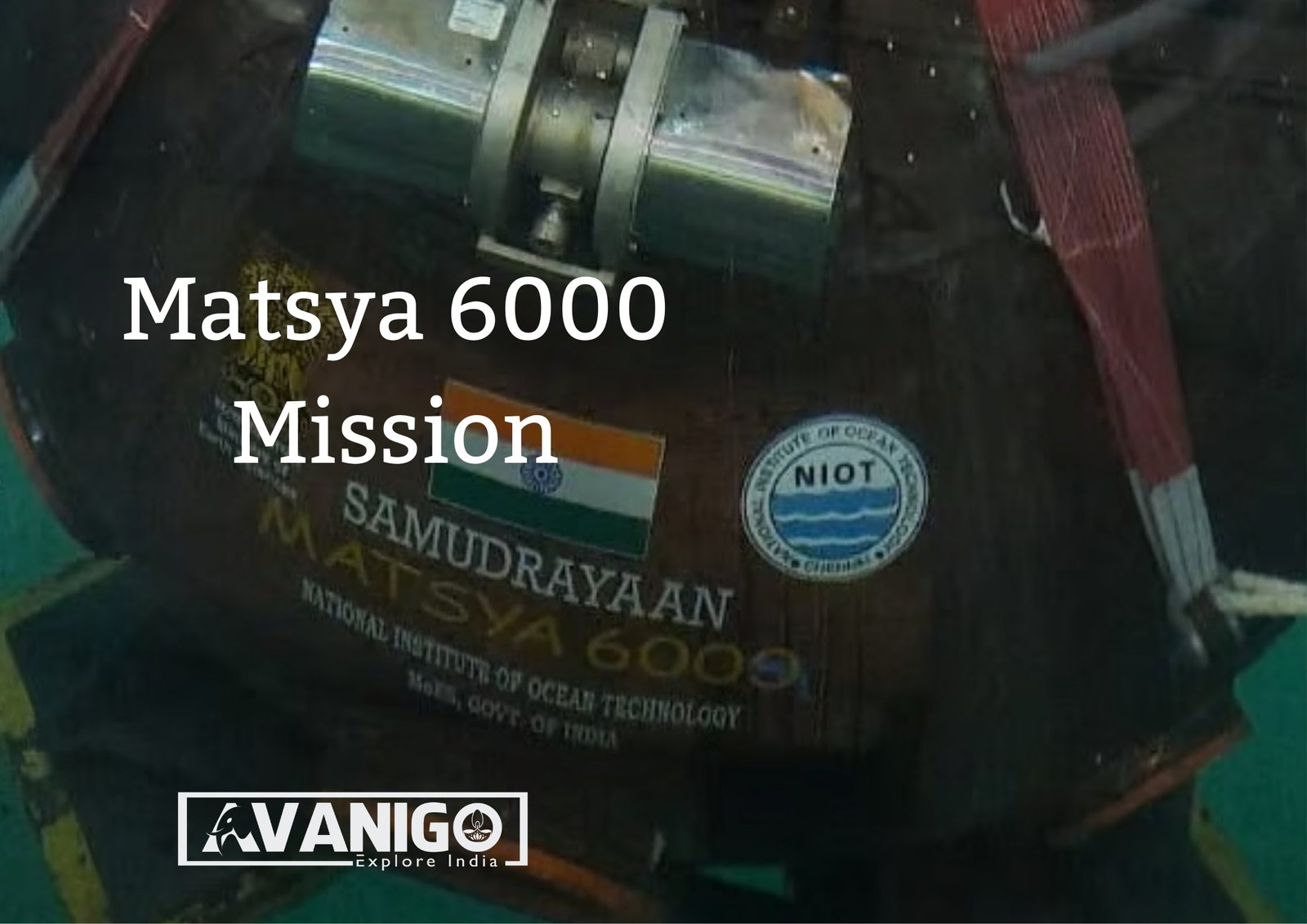India is aiming for the ocean depths with its ambitious Samudrayaan mission, a historic undertaking that will send Indian personnel into the deep sea in a submersible vehicle. As the nation boldly ventures into uncharted territories underneath the waves, this mission promises to shed light on the mysteries of the deep blue.
Quick Navigation
The Matsya6000: India’s Underwater Craft
The Samudrayaan mission will use an indigenously developed manned submersible called ‘Matsya6000‘ to embark on its monumental deep-sea journey. Built by the National Institute of Ocean Technology (NIOT), Matsya6000 can accommodate a crew of 3 and dive to a depth of 6000 meters underwater.
The craft is equipped with scientific sensors and tools to enable observations and experiments during its operational duration of 12 hours, extendable to 96 hours in case of emergency. Its special acrylic sphere design and life support systems ensure the crew’s safety at high pressures in the ocean’s dark abyss.
Matsya6000 has already successfully undergone trials to 600 meters depth off the coast of Chennai. With its advanced deep sea capable features, India’s ‘Fish 6000’ submersible will facilitate the historic human exploration of depths never before visited by the nation.
Key Objectives of the Mission
The Samudrayaan mission and the overall Deep Ocean Mission have multiple key objectives as outlined below:
- Exploration and mapping of physical, chemical and biological features of the deep-sea zone of Indian waters. This includes topography, various ocean resources, biodiversity, etc.
- Development of technologies for the sustainable harnessing of ocean resources such as polymetallic nodules, gas hydrates, hydro-thermal sulphides, etc., located on the deep-sea bed.
- Investigation of marine living resources and study of physical and geological processes that shape ocean dynamics.
- Conducting scientific experiments and testing instrumentation for deep sea conditions.
- Promoting capacity building and training in deep-sea biology, geology, geophysics and engineering.
- Gaining experience in human-crewed submersible operations and developing associated operational tactics and procedures.
- Enhancing national capacity in advanced marine technology development across various disciplines such as underwater robotics, sensors, materials, etc.
- Providing advisory services related to ocean climate change and developing early warning systems for ocean disasters.
- Augmenting desalination, tidal and ocean thermal energy generation through technological innovations.
- Creating job opportunities and boosting blue economy initiatives that utilize ocean resources.
Vasudhaiva Kutumbakam – India’s Timeless Philosophy
Scientific and Strategic Significance
The Samudrayaan mission holds tremendous scientific and strategic significance for India. Here is an overview of why this mission to inner space matters:
Scientific Significance
- It will provide direct observations and samples from the sea bed, which cannot be gathered effectively by remote sensing or surface sampling.
- Manned access to deep waters will allow testing of instruments and technologies in situ.
- Direct access down to 6,000 meters will unveil mysteries of the deep ocean that have not been explored before.
- Data gathered will enhance understanding of plate tectonics, ocean currents, climate change patterns, and sea bed resources.
ISRO’s Journey from Inception to Chandrayaan
Strategic Significance
- Technological capacity for manned submersible craft will strengthen India’s position as a maritime power with advanced blue water capabilities.
- Knowledge gained will aid navigation, naval operations, and underwater surveillance, especially in the Indian Ocean region.
- India’s presence in the EEZ will be established through the direct interventions facilitated.
- Critical metals can be accessed from the sea bed in support of Make in India and electric mobility.
Samudrayaan: Expanding India’s Oceanic Frontiers
The Samudrayaan mission will expand human access to over two-thirds of the world that has remained largely unexplored. Just as space missions have expanded our understanding of the cosmos, Samudrayaan will unveil the mysteries of inner space.
As Matsya6000 prepares to make its maiden voyage into the briny deep in 2026, India is truly venturing into an uncharted but highly promising underwater frontier. The discoveries and breakthroughs facilitated by Samudrayaan and the Deep Ocean Mission will illuminate oceanic darkness and also spotlight India’s advancing marine capabilities.
10 Things to Know About the Statue of Equality
FAQs
Q1. What is the main objective of India’s Samudrayaan project?
A1. The main objective of the Samudrayaan project is to explore the deep-sea zones in India’s Exclusive Economic Zone (EEZ) and harness ocean resources sustainably. It aims to study deep ocean biodiversity, map the ocean floor, collect geological and biological samples, test underwater equipment, etc.
Q2. What is the timeline for the first crewed mission under Project Samudrayaan?
A2. As per the Ministry of Earth Sciences, the first manned mission under Project Samudrayaan is expected to be launched in 2026-2027. It will send 3 persons in the indigenous submersible vehicle ‘Matsya6000’ to a depth of 6000 metres in the Indian Ocean for deep sea exploration.
Q3. How is the Samudrayaan project significant for India?
A3. The Samudrayaan project has scientific, economic and strategic significance for India. It will enable direct observation and access to deep sea resources, boost ocean research and technology development capacities, lead to the utilisation of ocean resources for economic growth and establish India’s advanced technological capabilities as a maritime power.
At AvaniGo, we are passionate about India and its mesmerizing culture. We intend to share the greatness of Indian culture through our articles. To learn more about us and contribute to our website, email us at hello@avanigo.com.

